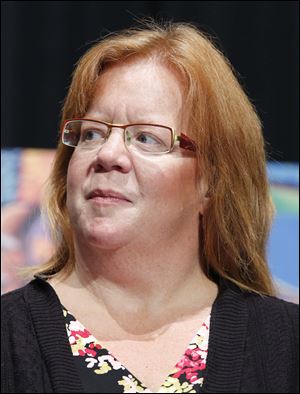
EDITORIAL
Shelter solutions
To address homelessness, Toledo needs a central database and the ability to respond immediately to crises
1/23/2014
Mathison
A meeting last week, called by United Way of Greater Toledo, took a long first step toward resolving the rifts among agencies that serve Toledo’s homeless population. A proper solution will include moving toward an intake system that combines the strengths of data-driven centralized access and an open “no wrong door” policy that some shelter directors favor.
Such a hybrid would maintain the advantages of a central database, while preserving the ability to respond immediately to people in crisis. Tensions over that issue, and others, have strained relations among shelter directors, the United Way, the Toledo Lucas County Homelessness Board, and city officials.
Until about a year ago, Toledo used a no-wrong-door policy. Homeless people would go to a shelter and either find help there or get sent to another shelter.
Now, though, people who seek shelter under centralized intake must call the United Way’s 211 line. They answer certain questions, then get referred by an operator to a shelter that has room.
Unlike many larger cities with inadequate shelter space, Toledo has enough beds for all of the estimated 1,000 people who are homeless here at any given time. As many as 3,000 Toledo-area residents are homeless at some time during the year.
Once in an emergency shelter, clients are to meet quickly with a United Way housing specialist, who assesses their needs and works to place them in permanent housing. United Way gets $193,000 a year to provide so-called coordinated assessment services. The agency receives no additional money for its 211 line.
Some shelter directors say glitches with the 211 line persist, including operators mistakenly telling someone a shelter is full. Even so, the United Way continues to improve the system, providing up-to-date and detailed information about shelter bed availability, around the clock. One way to make the system more effective would be to assign United Way caseworkers to designated shelters.
In an interview with The Blade’s editorial page, Karen Mathison, the president and chief executive officer of Toledo’s United Way, said future meetings — the next is scheduled for February — would attempt to streamline intake, including the elimination of duplicate forms, and ensure that operators have up-to-the-minute information about shelter bed availability more frequently than twice a day.
Controversy over funding and the new centralized intake system, as well as acrimony between shelter directors and the homelessness board and the former city administration, have eclipsed some of the good work done by the shelters and homeless advocates.
These rifts must get resolved under Toledo Mayor D. Michael Collins, who did not attend last week’s meeting. Shelter directors are right that their views and concerns haven’t been listened to, but they too must compromise. Insisting on returning to a no-wrong-door policy without centralized access is counterproductive and unrealistic.
Ms. Mathison said the next meeting might include a homeless person, or a formerly homeless person. It should. Those who work on homeless issues need input from those who are directly affected — and they need to be reminded why finding solutions is urgent.
Local advocate Ken Leslie, the founder of Tent City, called last week’s meeting “a huge success ... Everyone came together to find a solution, and everyone will continue working together.” After years of acrimony, that in itself is an achievement.